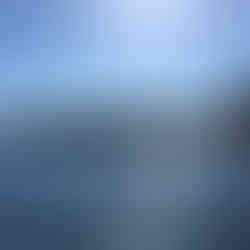At anchor at Holy Island
- Roland en Leontine Kellaway

- May 18, 2018
- 3 min read
We leave Amble shortly before low water with just enough water under the keel to get over the tidal sill at the harbour entrance. The sea is very kind to us on our way north towards our next stop Holy Island. We both feel very relaxed about the journey ahead of us, the slight sea state and more specifically the timing of our “tricky” entrance to Holy Island which can only be attempted two hours on either side of high water. The visibility is excellent and we quickly spot Bamburgh Castle on the coast opposite the Farne Islands.

The Farne Islands are a set of small islands and outcrops off the Northumberland coast forming a nature reserve run by the National Trust. On approaching the islands we are well aware that we are not allowed to land on the islands but there is nothing to stop us anchoring on the south side of the island called Wideopen. This is the first time we get to anchor with our new 20 kilo Rocna anchor, fortunately it sets beautifully in 12 meters of water, with an ample scope of chain. Roland proceeds to get the outboard engine securely mounted on the stern of our trusty dinghy WR4-tje. And off we go for the first time in the dinghy motoring away from our anchored yacht - a strange but exciting feeling.
The Farne islands are covered with wildlife - Guillemots, Puffins and Razorbills swarming around us like bees. Cormorants perching on the headlands soak up the sunshine on their unfolded wings. We are both deeply impressed by the beauty of the islands and amazed at how many different species of creatures are safely housed on this small island group.

After our short exploration we weigh anchor again and proceed to Holy Island (also known as Lindisfarne) where Roland steers the boat through the shallows following the leading lines of two stone beacons and then the church tower in the village. On arrival we anchor in six meters of water and are welcomed by seals all around us sticking their heads above the water to check out the new arrivals.
Holy Island is steeped in history going back hundreds of years to the 6th century and is an important center of Celtic Christianity under the control of Saint Cuthbert. The island itself has one hotel, one pub and in total about 180 inhabitants. We are by now very used to arriving at new moorings and going ashore to explore, however anchoring is a new experience for us. We slip the lines from the WR4-tje and are immediately carried backwards away from the boat by the very strong incoming current which gives us the optical illusion that Whiskey Romeo 4 is sailing away without us! We beach the dinghy and climb to the top of the cliff to look out at our peaceful anchorage and are reassured to see that the anchor has held and our boat is exactly where we left her!
Time for a hard earned lunch in the beer garden in front of the local hotel with a nice pint of beer!
In the middle of the night as the tide changes Roland gets out of bed to check that the anchor is holding - good news the anchor has reset itself so no adjustments are required.
We leave Holy Island just after low water amidst the seal colony and negotiate our way safely back out to sea through the shallows.
Next stop is Eyemouth a shallow water harbour on the south east coast of Scotland (visitors pontoon is dredged to 0.9 meter which is too shallow for our draft of 2.0 meter) Roland gets permission from the harbour master to moor in the deep water basin with the fishing fleet. With a difference between high water and low water of five meters at spring tide we are very glad that we have a sufficient number of lengthy land lines to keep us safe through the ebb and flood.

























Comments